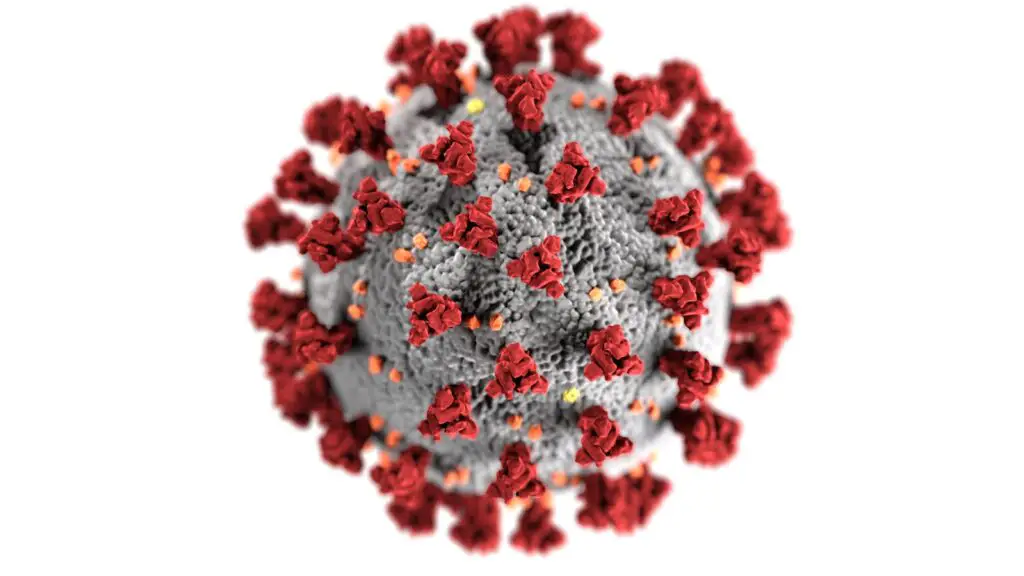Any great travel experience involves many fascinating destinations, but this also carries a certain risk to one’s health. Different regions come with different challenges, and the more aware you are of diseases you may have to face, the greater the chance that your travel will be safe and healthy. In this article, we look at some of the common diseases travelers encounter and some tips on how to prevent them.
Traveler’s Diarrhea: The Nasty Surprise
Travelers’ diarrhea is one of the most common maladies to afflict tourists, mainly in countries where the standards of food and water hygiene differ from those at home. It is obtained by ingesting infected food or water and hence is quite a spoiler during your trip.
I will never forget a trip to Mexico in which I developed a bad case of traveler’s diarrhea. I had been consuming a great deal of the local foods-particularly street foods-without much regard for hygiene standards.
The aftermath was intense stomach cramps and frequent trips to the bathroom that kept me in bed for days. This experience underlined the importance of paying especial attention to the sources of food and water.
Prevention Tips:
- Bottled Water: Use bottled or filtered water. In addition, the ice cubes should not be used in any drink due to the fact that the water applied is adulterated.
- Cooked Foods: Resign yourself to a diet of only cooked foods and within that process avoid the raw or undercooked foods, most specifically meats and seafood.
- Good Hygiene: Wash your hands with soap and water, or use an alcohol-based hand sanitizer where soap is not available.
- Respiratory Infection: Keeping Airy
Respiratory infections include the common cold or even flu that one gets at airports and by using public transportation. In addition, climate changes, new pathogens, and increased travel stress all have their own role in weakening the immune system.
- Wash Those Hands: This bears repeating, especially before eating or even touching your face.
- Disinfectant Wipes: Sterilize airplane trays and remote controls in hotel rooms.
- Avoid Close Contact: Try to avoid contacts with people showing signs of sickness and also avoid close proximity to groups in highly congested areas.
Malaria: The Mosquito-Borne Menace
Malaria remains an important threat in many parts of the tropical and subtropical world. Infection is spread through the biting of the female Anopheles mosquito. If left untreated, it may cause serious sickness-even death. The symptoms are fever, chills, headache, and muscle pains that may at times feel very similar to flu.
The prevention of malaria will entail a few steps: taking anti-malaria medicine by prescription from health care, especially in countries with malaria prevalence; putting insect repellent with DEET; besides that, wearing long-sleeved clothes and sleeping under mosquito nets can reduce the chances of a bite.
Our team’s research on malaria prevention was thus informed by consultations with those who have been time and again traveling in malaria-endemic areas, as well as consultations with health experts. In fact, their advice mainly stresses the observance of preventive measures consistently to avoid this dangerous disease.
Dengue Fever: A Growing Concern
Dengue fever is another mosquito-borne disease gaining much currency in most parts of the world, especially in Asia, the Caribbean, and Latin America. It is caused by the dengue virus, which brings about extremely high fever, strong headache, pain into joints and muscles, and rash.
Sometimes, dengue may also develop into the severer form referred to as Dengue hemorrhagic fever, which may be fatal.
Especially important is the avoidance of mosquito bites, particularly during daytime; at this time, the Aedes mosquito is most active. This risk may be reduced by protective clothing, applying insect repellent, and staying in accommodations that are air-conditioned or have screened windows.
On a research to Southeast Asia, our team noted that local communities took pains to use mosquito coils and nets. Their practices became some of the major recommendations for travelers headed for dengue-prone regions.
Typhoid Fever: The Silent Threat

Other conditions which a tourist should put in consideration are typhoid fever. This is most particularly during those journeys where there is minimal hygiene present. It is an infection caused by the bacteria called Salmonella Typhi. The infection occurs when food or water with the bacterium contaminates it. Symptoms included prolonged fever, headaches, abdominal pains, and sometimes even a rash.
The best way of prevention of typhoid fever is vaccination, and it is recommended to people who travel to places where there is a high risk. Other than vaccination, paying close attention to personal hygiene, such as frequent hand washing and eating only well-cooked foods, will minimize the risks.
Long time travellers in highly typhoid-affected areas stressed the compilation we prepared for the prevention of typhoid. They reiterated that it is not enough that a person be immunized but that one must also be constantly conscious and aware of the safety of food and water during the travel.
Hepatitis A: The Most Prevalent Viral Infection
Hepatitis A is a viral infection of the liver whose common source is through ingestion from infected food and water. It occurs among populations that usually have very poor sanitation. Symptoms include fatigue, nausea, abdominal pain, and jaundice.
It is prevented by hepatitis A vaccination, which has long-lasting protection. Besides this, necessary precautions may be ensured with food and water consumed, particularly during travel to high-risk areas. The risk considerably decreases at each consumption of bottled water, with avoidance of raw or undercooked foods.
By the time we are producing this guide, our team had talked to the health professionals and most of them advised hepatitis A vaccine for most international travelers. This was their suggestion for being on the safe side in advance so one could avoid most of the likely health problems on the road.
Yellow Fever: A Serious Concern in Certain Regions
It is a viral disease caused by the infecting mosquito, mainly in some areas of Africa and South America. The disease, which is usually transmitted through the bite of an infected Aedes mosquito, may be just mild with symptoms no worse than fever, chills, headache, muscle pain, and jaundice. In serious yellow fever, tissue death occurs in organs leading to total organ failure and, thus, death.
It is best prevented by vaccination, which also is requisite in most countries before entry. Mosquito bites are to be avoided through repellants and sleeping under the nets.

Consultations with travelers who frequently visit Africa and South America further enlightened the prevention of yellow fever to our team. They outlined that for travel to most countries, vaccination well in advance is required because many countries demand proof of vaccination upon arrival.
Rabies: A Risk from Animal Encounters
Rabies is an acute infection of the nervous system caused invariably, once the clinical symptoms appear, by a fatal virus. The infection occurs through the bites or scratches of infected animals: dogs, bats, and even monkeys. Clinical manifestations are fever, headache, muscular weakness, culminating in paralysis and death.
It is prevented by avoiding infected wild or stray animals and by immediate medical consultation in case of any contact, bite, or scratch. Pre-exposure rabies vaccination among travelers to highly endemic areas is also recommended.
The personal experiences of some foreign travelers who claimed to have had close contact with wild animals infected with rabies helped our group advice on the prevention of rabies. Their stories underlined the seriousness of caution required and the need for immediate action when one gets a scratch or animal bite.
Zika Virus: Of Particular Concern to Pregnant Travelers
The other mosquito-borne Zika virus soon began making front-page news as it became associated with birth defects of babies born from infected mothers. While consequently, the majority of the people with Zika present symptoms no worse than fever, rash, and joint pain, in fact, the virus is a very serious threat to pregnant women.

Pregnant travellers Zika prevention relies on avoidance of areas with virus transmission. If the travel cannot be avoided, prevention measures against mosquito bites include use of insect repellent on exposed skin and clothes and wearing of long sleeves and pants. Staying in an accommodation that is air conditioned or screened avoids mosquito bites.
Consultations with the experts of public health greatly informed our research into Zika and emphasis placed on such critical protection of pregnant women from this virus. This therefore, gave us an opportunity to establish guidelines for travelers looking to minimize their risk of exposure.
Schistosomiasis: A Waterborne Hazard
Schistosomiasis-also known as bilharzia-is an infection caused by a parasite-a type of worm that usually resides in freshwater snails.
Generally speaking, it is usually acquired through contact with water containing the organism. It usually concerns areas of the tropics and subtropics. Symptoms of this infection include rash, fever, chills, and muscular pain. Chronic infection may lead to serious health complications.
Prevention of Schistosomiasis: Avoid swimming or wading in freshwater bodies in endemic areas. For this reason, chlorinated pools and seawater are good alternatives for effective swimming. In case contact with possibly contaminated water cannot be avoided, then quick drying should follow and further symptoms warrant seeking medical advice.
Schistosomiasis, in our study, was a disease few travelers knew anything about – though it is a significant concern in key parts of the world. Useful feedback from local health authorities and many experienced travellers helped us develop a recommended strategy that avoids the disease.

Flu: A Global Killer
Flu, or influenza, is a viral infection of the upper respiratory tract that affects millions across the age brackets worldwide. Influenza is a very contagious infection and usually spreads through respiratory droplets. General symptoms include fever, cough, sore throat, and pains in the body.
Most are back to normal in less than two weeks to several days. The flu can cause complication risks that involve serious disease, especially among young children, older adults, and persons with certain chronic health conditions.
Vaccination against influenza is recommended annually and especially before the start of the influenza season or before traveling to an area endemic with influenza. Also, a way to prevent infection risk includes best hygiene practices: frequent hygiene of hands, and avoiding close contact with actively ill-appearing individuals.
Keeping this fact in mind, our team considered recent evidence-based guidelines from international health organizations whose recommendations emphasized vaccination as the best option out of all the approaches for flu prevention, particularly for travelers.

Team Insights: How We Came Up with These Suggestions
The research team here has done in-depth research on various travel-related diseases and their prevention, interviewed health experts, and also discussed with avid travelers.
We wanted our guide to be comprehensive so that it would help not only inform the traveler but also empower him in taking proactive steps in the protection of his health.
Each one of us brought different experiences to the table. From the unfortunate malady of traveler’s diarrhea in very remote parts of the world to headaches associated with trying to navigate just what vaccination requirements exist, we drew upon varied backgrounds to develop content for this article.
We also consulted public health experts and checked recent resources for appropriateness of advice.
Writing these tips, we tried to pinpoint the most crucial health problems a traveler can be confronted with. At the same time, we tried to let you have handy and actionable tips. We really hope that this will make your trip possible not only in good health and fun but with the knowledge of how to avoid the most frequent diseases and be safe throughout your adventure.
Conclusion
This openness to new cultures, foods, and landscapes also brings about health risks. Remarkably, one can prevent the contraction of a number of common diseases among travelers with preventive measures in terms of vaccination, hygiene, and food and water precaution.
Let these tips sink in for a safe and memorable voyage since one can only really appreciate traveling if he stays healthy.


Leave a Reply